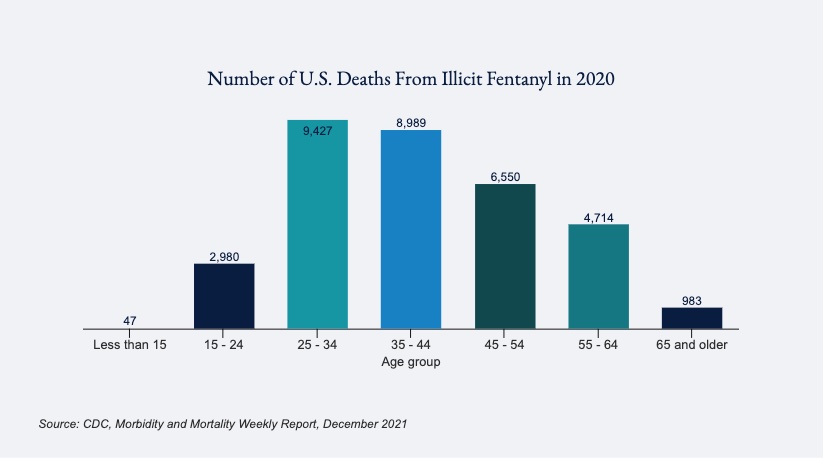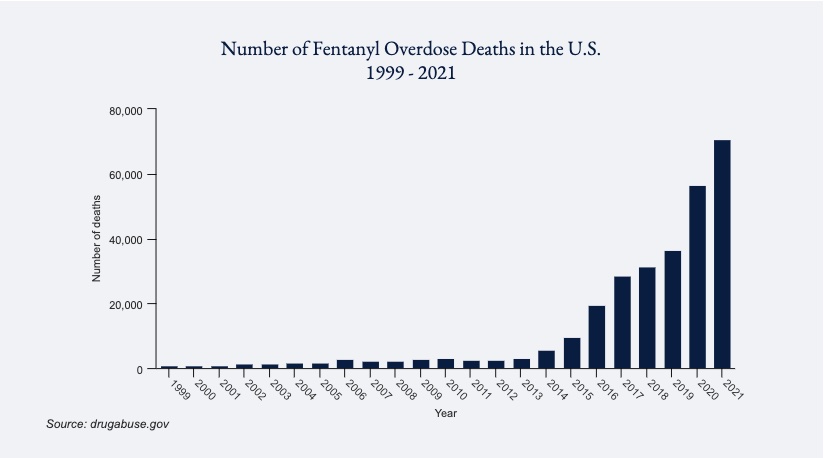Laura López González, UC San Francisco

The powerful opioid fentanyl has been found in everything from methamphetamine and cocaine to marijuana and fake Adderall pills. Nearly 6,000 Californians died from fentanyl overdoses in 2021 alone. Cruelly, about one in every 25 of those deaths was a child 19 or younger, according to the latest data from the California Overdose Surveillance Dashboard.
A synthetic opioid, fentanyl is often carefully prescribed by doctors to treat severe pain in people living with cancer, recovering from surgery or who are terminally ill. However, most fentanyl-involved deaths are due to illicitly made fentanyl, and a small amount is enough to cause an overdose. California has set aside $4 million to distribute fentanyl testing strips as part of Governor Gavin Newsom’s $1 billion overall plan to address the crisis.
Test strips have been shown to allow people who use drugs to be safer, whether by using less, carrying the opioid overdose-reversing medication naloxone (Narcan) or by using with others who could call for help in the case of an accidental overdose, studies show.
UC San Francisco Volunteer Assistant Clinical Professor in Clinical Pharmacy Tessa Rife-Pennington, PharmD, BCGP, works at the San Francisco Veterans Affairs Medical Center and with UCSF’s Addiction Research Program. In 2019, UCSF funded a successful pilot project to distribute fentanyl test strips to San Francisco veterans at the center. The pilot paved the way for similar projects at other Veteran Affairs’ centers nationwide.
Why is fentanyl ending up in so many different types of drugs?
There are a lot of factors but one reason is that it can be made cheaply. It’s also often made as a white powder, which can easily be mixed or “cut” with other drugs like heroin to make them stronger, allowing people who sell drugs to make more profit.
Some people may also prefer to take an “upper” like cocaine or methamphetamine mixed with a “downer” like fentanyl for the combined effects.
Fentanyl may also be cross-contaminating other drugs as they are stored or trafficked.

What are fentanyl test strips?
Fentanyl test strips can be used at home to check drugs for fentanyl and at least 10 other drugs that are chemically similar to fentanyl, including the animal tranquilizer carfentanil. These strips can find fentanyl in any form of drug: powder, liquid or solid drugs.
Why should you use fentanyl test strips?
During the COVID-19 pandemic, we had more people in the Bay Area die from fentanyl than COVID-19, so fentanyl overdoses are really impacting our community.
Fentanyl is ending up in many different drugs, but many people aren’t aware, so they’re taking substances they’ve taken for years and unexpectedly overdosing. Kids, for example, might get a pill at a party, and it may look legitimate, but it’s not. Anyone can buy a press to make pills that look just like prescription drugs these days.
There’s no clear way to tell by sight, taste or smell that something has fentanyl. The only way to know is to test. By testing their drugs, people can know what they’re taking and take steps to be safer, like getting Narcan.
How accurate are fentanyl test strips?
Most fentanyl test strips are between 96% to nearly 100% accurate in detecting the presence of even small amounts of fentanyl.
Can I get a false positive?
One study found high amounts of methamphetamine, MDMA and diphenhydramine (Benadryl), a common cutting agent in heroin, can cause a false positive.
I educate my patients: If you’re checking methamphetamines or MDMA for fentanyl with test strips, you only need to use a small amount of the drug to check. Too big an amount could cause a false positive. At the San Francisco Veterans Affairs Medical Center, we’ve started packaging fentanyl testing strips with tiny, plastic measuring scoops to measure the right amount of drug to check. Patients can use sterile water or solution in the kits to dilute the drug for checking.

Are fentanyl test strips legal?
Fentanyl test strips are not prohibited in California. Still, in some states, they continue to be illegal because they are considered “drug paraphernalia” under older drug laws.
How much do fentanyl test strips cost?
Test kits that include strips and a special testing solution can cost anywhere between $25 to $40 each and are available online. The individual test strips are about $1 each. But there are more than 60 community programs in California and many provide fentanyl testing strips for free.
Won’t allowing people to test their drugs encourage more drug use?
I hear this common concern from patients, staff and community members. There’s no evidence that test strips increase drug use.
More than 30 years of evidence looking at providing sterile syringes to people who inject drugs shows people will use drugs, whether or not they have access to clean supplies. If they don’t have access to clean syringes, they may reuse or share needles, which increases their risk for HIV, hepatitis C and wounds.
We want to meet people where they’re at today with their drug use so that we can keep them with us and build that trust. Then, if and when they want to change their use – maybe stop, reduce or switch to a safer drug – we’re here for them.
I’ve had a few people who quit using stimulants after using testing strips because they could not get any drugs that didn’t have fentanyl; their drugs were always testing positive for fentanyl. They didn’t want to be exposed to fentanyl, so they quit.
If you or someone you know is struggling with addiction, recovery is possible. For help, please call the free and confidential treatment referral hotline 1-800-662-HELP or visit findtreatment.gov.

